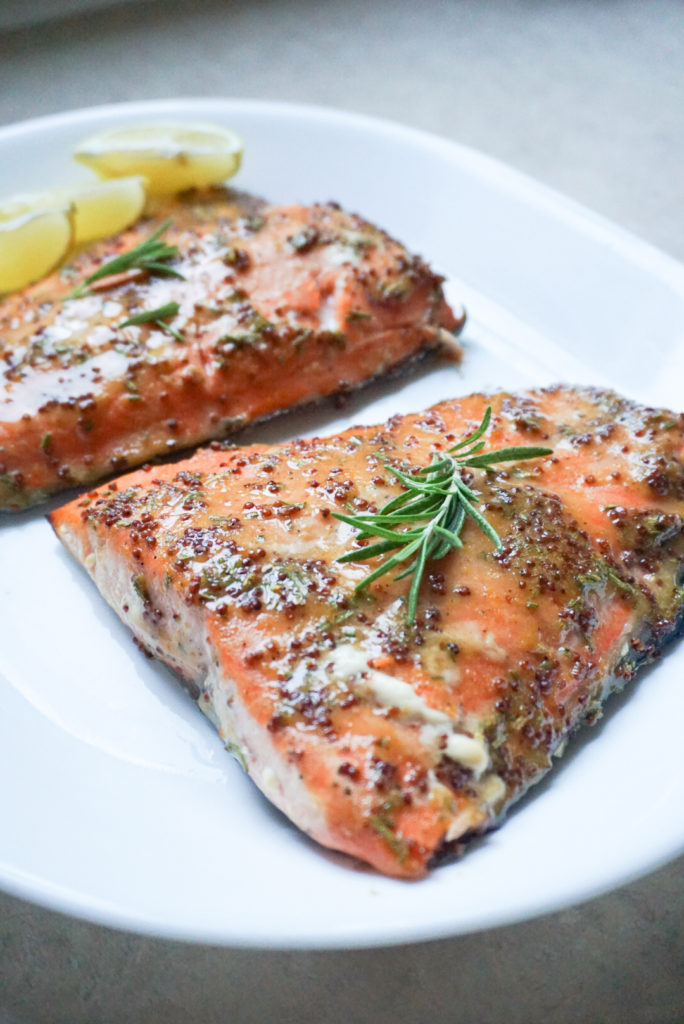
Salmon—rich, fatty, and flavorful—is a huge treat. It is also expensive.
The exception: things get considerably cheaper if, um, your dad picks up recreational fishing and heads to Alaska every August to pull something north of a hundred pounds of salmon and halibut out of the frigid waters off the coast of Sitka. (I would hate me right now, too.)
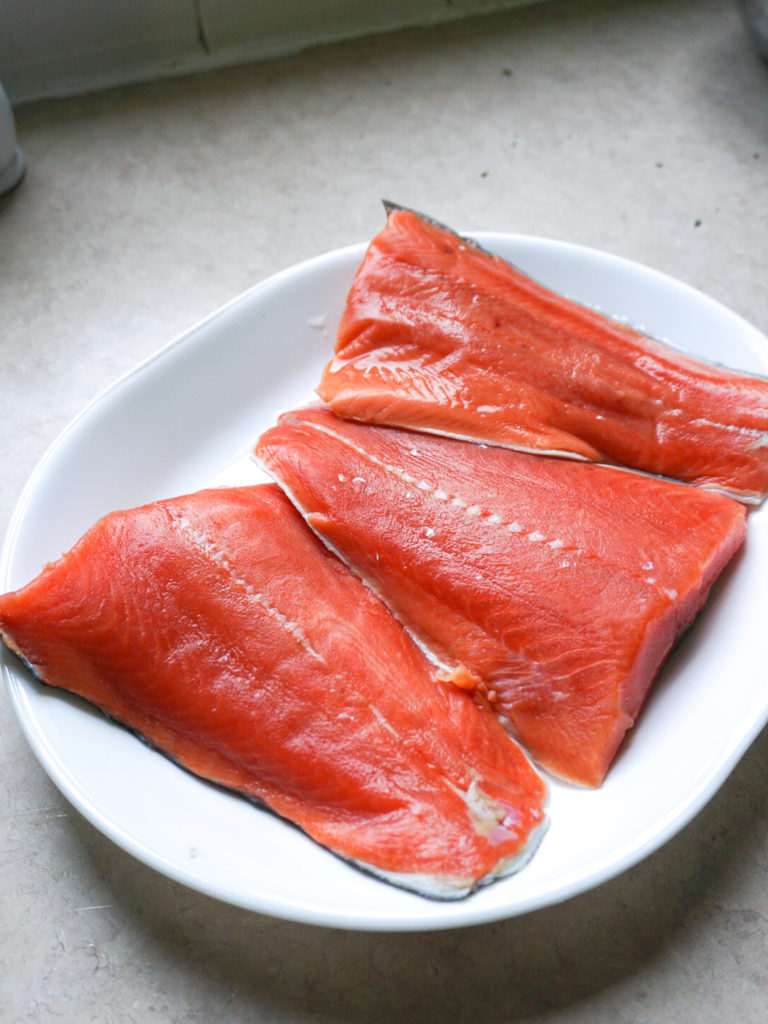
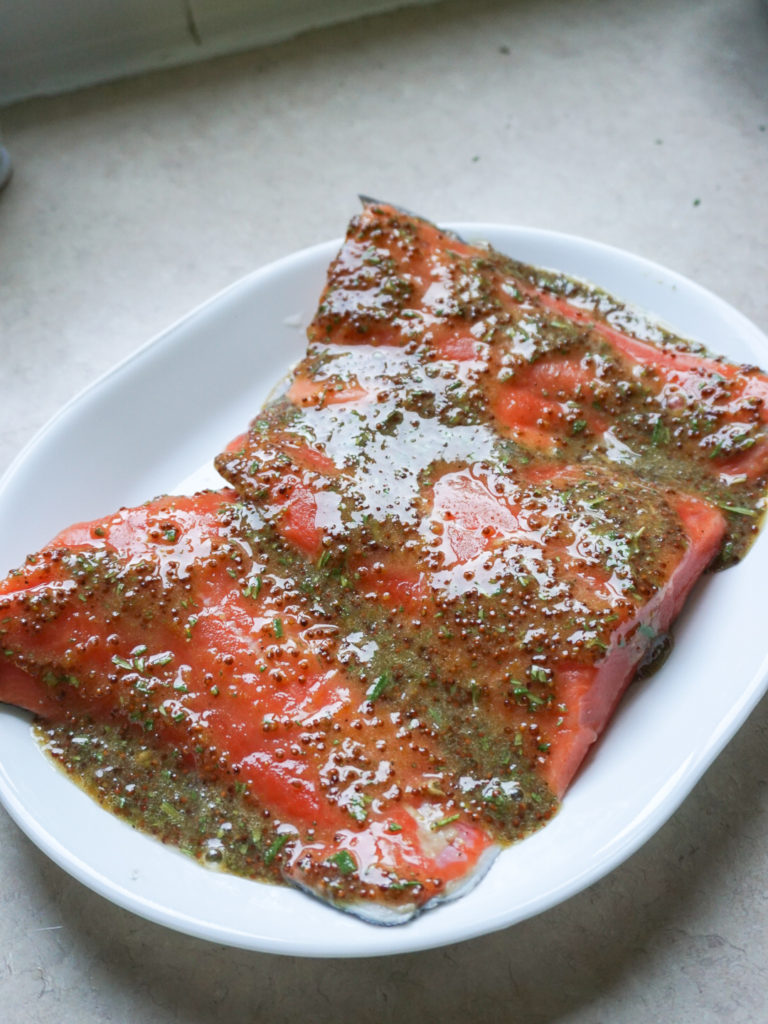
My mom and dad eat the lion’s share of the fish, as they rightly should. But every time I visit them in California, I load up a cooler of frozen salmon to lug back to the East Coast. (I’ve gotten some strange looks from seatmates as I slide my cooler under the seat in front of me—like I’m running some nefarious black market organ operation.)
Though I’m not forking over cash for the fish, I still know it’s precious. I am loathe to waste even one fillet on anything less than an excellent recipe, and I get especially frustrated with myself if I overcook the fillet, turning it from moist to chalky.
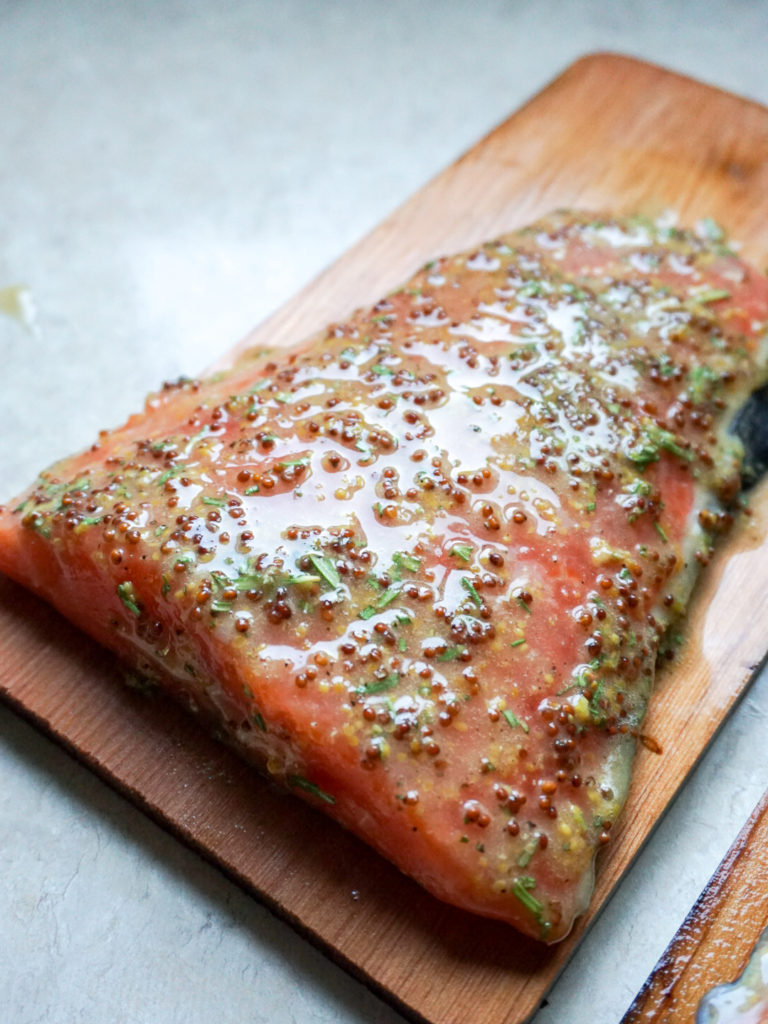
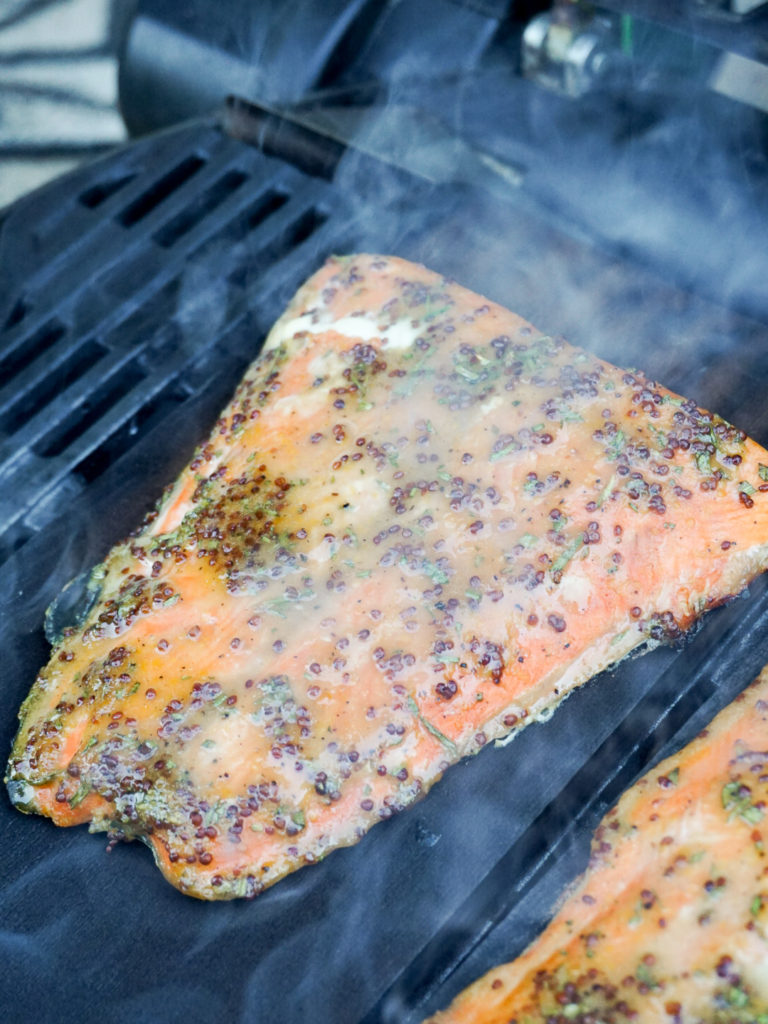
Both incredibly flavorful and absolutely foolproof, this recipe has become my go-to. The marinade, which turns into a rich glaze on the grill, is simple: mustard, honey, rosemary, and lemon zest. And the cedar plank-on-the-grill method is exceptionally easy. You soak the cedar plank in water for a few hours beforehand, then place the salmon on the plank and the plank on the grill. The moisture from the plank steams into the salmon, imparting a sweet, smoky flavor to the fish while ensuring the flesh remains moist. And since the wood, not the salmon, is in contact with the flame, it’s almost impossible to burn the fish (I would think you would notice the plank bursting into flames, first).
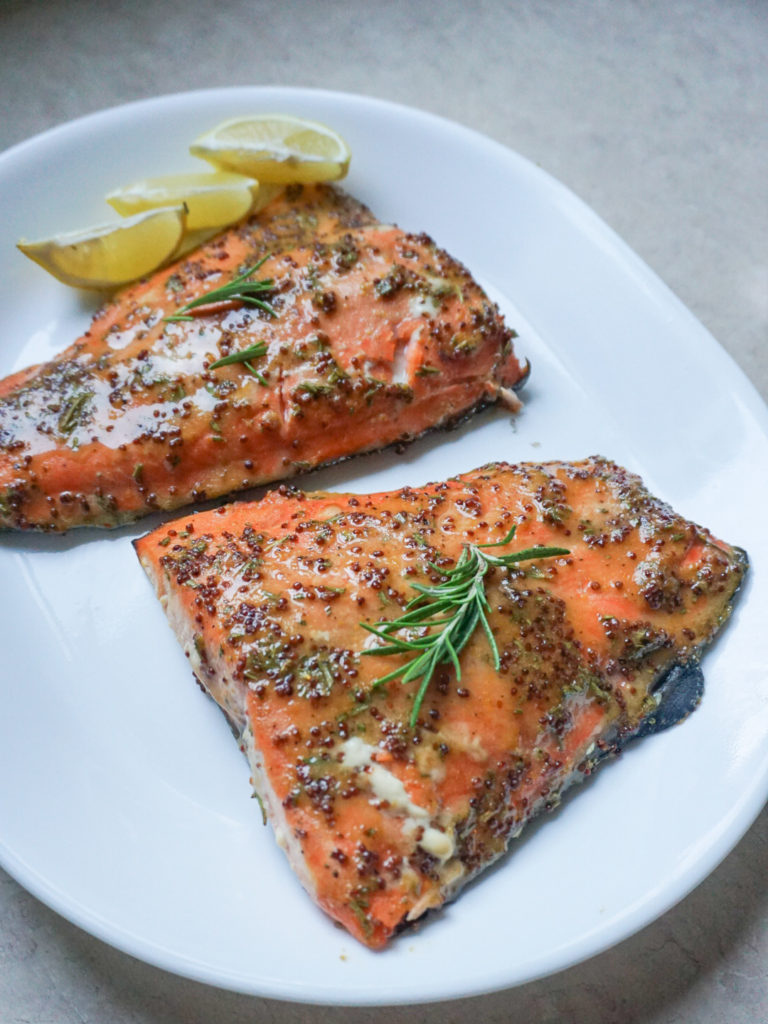
I’ve served this for special occasions (with lentil salad and a chocolate dessert) and for casual summer dinners (with corn on the cob and a pasta salad); it feels equally appropriate at both ends of the spectrum.
I lugged the salmon across the country in a cooler under an economy seat. You paid good money for it. Either way, do the fish justice: make this recipe.
Previously:
One year ago: Asian Chicken Salad with Snap Peas and Bok Choi
Two years ago: Vegetable-laden Tart
Three years ago: Sweet Corn Tofu Frittata with Roasted Cherry Tomato Compote
And for my Australians:
Six months ago: Brussels Sprouts, Apple, and Pomegranate Salad
One and a half years ago: Butternut Squash Mac and Cheese
Two and a half years ago: Hot Fudge Banana Pound Cake
Cedar Grilled Salmon with Rosemary-Mustard Glaze
Adapted very slightly from Gourmet
Serves 4
Ingredients
2 tablespoons grainy mustard
1 tablespoon dijon mustard
2 tablespoons honey
1 teaspoon minced rosemary
1 tablespoon lemon zest
salt and pepper, to taste
2 big salmon fillets with skin (1 1/2 inches thick), see note following recipe for more information on sustainability
Equipment
charcoal or gas grill
1-2 cedar grilling planks, depending on the size of the plank and of your salmon (available in the grilling section of your local hardware store, at Costco, or on Amazon)
Instructions
Soak cedar grilling plank(s) in water for at least 2 hours (I’ve done up to 8, while I was at work during the day). Place something heavy on top so they are totally immersed. (I put them in a tall-sided roasting pan, fill the pan with water, and lay a frying pan on top.)
Stir together mustards, honey, rosemary, zest, and a hefty pinch of salt with a few grinds of pepper. Spread mixture on flesh side of salmon and let stand at room temperature 15 minutes.
Prepare grill for direct-heat cooking over medium-hot charcoal (medium-high heat for gas).
Put salmon on plank, skin side down (if salmon is too wide for plank, fold in thinner side to fit). Grill, covered with lid, until salmon is just cooked through and edges are browned, 13 to 15 minutes. (Be careful, though: your fillet and mine might not be the same thickness, so here are a few tips on testing for doneness.) Let salmon stand on plank 5 minutes before serving.
Notes
After coming clean about my gratis salmon situation, I know I’m not in a good position to encourage you to choose pricey wild Pacific salmon over cheaper farmed Atlantic salmon. So, I’ll just give you the information let you decide.
Nearly all fish labeled as “Atlantic salmon” in American grocery stores is farmed salmon. Farmed salmon presents two main concerns. One, the use of chemicals in marine net pens can harm the environment. (Salmon farmed in tanks don’t face this issue, but relatively few salmon are yet farmed this way.) Two, farmed salmon is not as healthy as wild: it has a much higher fat/saturated fat content, and the fish are artificially dyed to get that typical pink color.
Wild salmon–which is to say, Pacific salmon–is not without problems, either. Though it is better for the environment and healthier for you, certain types of salmon have been overfished (which, incidentally, is how wild Atlantic salmon disappeared, to begin with).
If you’re concerned about the environment and overfishing, download the Monterey Bay Aquarium Seafood Watch app, which you can use to crosscheck against the fish you see at the grocery store. And make salmon a rare treat! There are so many other tasty, plentiful fish out there: here is a great guide from GQ (of all places) on what seafood you can substitute for overfished favorites, along with a few ideas on preparation.
Leave a Reply